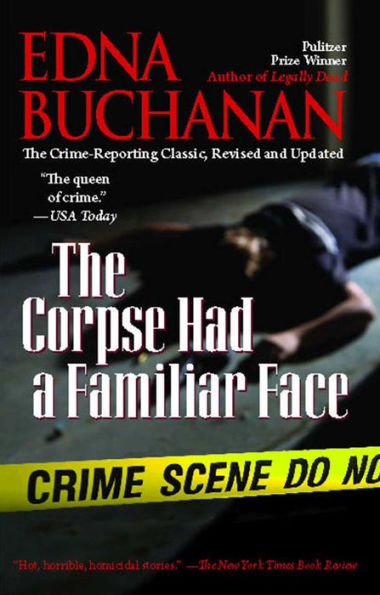
The Corpse Had a Familiar Face: Covering Miami, America's Hottest Beat
448
The Corpse Had a Familiar Face: Covering Miami, America's Hottest Beat
448eBook
Related collections and offers
Overview

Product Details
| ISBN-13: | 9781416503279 |
|---|---|
| Publisher: | Pocket Books |
| Publication date: | 06/15/2004 |
| Sold by: | SIMON & SCHUSTER |
| Format: | eBook |
| Pages: | 448 |
| Sales rank: | 502,063 |
| File size: | 378 KB |
About the Author
Read an Excerpt
Introduction
It was my day off, but it was murder. Again.
The phone caught me on the way out. A body in a car in a parking lot. Sure, I said. It was on my way. I'd check it out. It was high noon, during the Christmas rush, in a city parking lot outside a Miami Beach department store near bustling Lincoln Road Mall.
A shiny, lime-green Coupe de Ville sat at a meter, its wheels turned sharply. The red flag signaled violation.
The driver's time had run out.
The meter maid had written a parking ticket. She leaned over to place it on the windshield and saw the man inside. A parking ticket would not irritate this driver. Nothing would. She called the police.
A knot of patrolmen and detectives ringed the car. I still hoped it was something simple. Maybe a heart attack, or a suicide. A bald, cigar-smoking detective named Emery Zerick stepped away from the car and called my name. I saw the look in his eyes and I knew: My day off was down the toilet.
This cop was no rookie. He had seen it all -- and more. It was clear that something was different about this one. "Come on," he invited. We walked up to the Cadillac. I leaned over carefully, without touching it, and peered inside.
The corpse had a familiar face.
To the thatch of silver-gray hair, the ferociously dark and shaggy eyebrows, something had been added: powder burns. They smudged the flesh around the two holes in his left temple. An exit wound on the right side of his face had bloodied his cheek.
"It's your friend and mine, Mr. St. Jean," the detective said. His low, distinctive voice was steady and without emotion. We looked at each other. I took a deep breath and nodded.
My day off was history. So was Harvey St. Jean.
Harvey had it all: money, prestige, and a national reputation as a formidable and flamboyant criminal defense lawyer. He attracted the most colorful and newsworthy people in trouble. I first met Harvey when he represented Jack "Murph the Surf" Murphy, the beachboy jewel thief who stole the priceless Star of India, the world's finest sapphire.
The murdered criminal lawyer and the weathered detective standing beside me went back even further. As young men both wore the badge and the gun.
Harvey began as a Miami Beach cop. He pedaled a bicycle on patrol of the rich residential islands back in the days when Al Capone lived in a big house on Palm Island. Harvey liked the moneyed lifestyle he saw there. He didn't keep his badge long. He studied law at night school and learned how to use it to get people out of jail instead of putting them in there. He had a talent for freeing the accused.
The talent bought him a Jockey Club apartment and his own sauna and whirlpool. His expensive golf clubs lay in the trunk of his Cadillac. It looked as though he had planned to play eighteen holes that afternoon.
Harvey had it all, but somebody with a gun had just taken it away. I scanned the parking lot for a pay phone. I had to tell my editors to start a photographer rolling.
I cover crime for The Miami Herald, daily circulation 438,334. In my sixteen years at the Herald, I have reported more than five thousand violent deaths. Many of the corpses have had familiar faces: cops and killers, politicians and prostitutes, doctors and lawyers.
Some were my friends.
This book is about them, about life and death in Miami -- the place, the people, and the world of a police reporter in a city like no other.
Copyright © 1987 by Edna Buchanan
Table of Contents
Contents
Introduction
PART I
One Miami, It's Murder
Two Paterson, New Jersey
Three Miami Dreams and Legends
Four Nobody Loves a Police Reporter
Sidebar White Kittens Dancing
PART II
Five Cops
Six Crooks
Seven Sex
Eight Drugs
Nine Missing
Ten Justice
Eleven McDuffie
Sidebar Rocky Rowf
PART III
Twelve Miami Then and Now
Thirteen Getting the Story
Fourteen Home at Last
